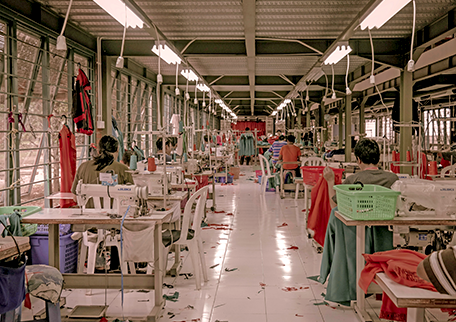Use and Abuse of Technology
This blog post was written by Liluye Staff Writer, Katie Hutchinson, who is a driven and compassionate environmentalist and humanitarian.
The United Nations was created to promote and establish peace throughout the world. The organization has evolved to keep pace with the changing globalized environment and to stop mass atrocities. In 2005 at the World Summit, “the largest ever gathering of heads of state and government committed themselves unanimously to a new principle: the Responsibility to Protect (R2P)” (Bellamy, 2018). This principle was created after numerous crimes against humanity took place throughout the globe in the hope of putting an end to them. The intention was a way to escape the logic of “sovereignty vs. human rights” (Bellamy, 2018) and find what is necessary to protect those in need. The R2P includes three equally important components:
1. The responsibility of the state to protect its population from atrocities and their incitement.
2. The international community’s responsibility to assist the state to fulfill its R2P.
3. When the state is failing to fulfill its duties, the international community responds in a timely peaceful action, using force as a last resort (Bellamy, 2018).
While many things recently shut down, went out of business, and were impacted in ways many that hadn’t been anticipated amidst the global, COVID-19 pandemic, human trafficking was unfortunately simplified. During this time, a more powerful market was created, with users able to utilize their own smartphones to not only locate, recruit, traffic, and advertise human beings but to exploit and purchase them, too. All of which is happening now at an unfathomable speed, and in secrecy. The United Nations Office of Drugs and Crime (UNODC) recognizes this huge problem, and in response has created the World Day Against Trafficking in Persons on July 30th. This year’s theme focuses on the “Use and Abuse of Technology” (UN, 2022).
This day was not created just out of the pandemic. Since 2003, information on a reported “225,00 victims of trafficking” (UN, 2022) has been collected. “In 2006, responding to the Economic and Social Council (ECOSOC) request for intergovernmental agencies to further cooperate in order to strengthen technical assistance provided to countries in the area of human trafficking…[and in] 2010, the General Assembly adopted the Global Plan of Action to Combat Trafficking in Persons, urging governments worldwide to take coordinated and consistent measures to defeat this scourge” (UN, 2022). Every country is reported to be involved in trafficking, either as an origin country for persons trafficked, a transit country, or the destination for victims.
As our world has made a shift from operating in person, face-to-face, to a digital platform, it’s no surprise that more people are able to exploit these victims as long as they can connect to the internet. This intense shift has allowed trafficking to conquer cyberspace and fulfilling the Responsibility to Protect to become more challenging than ever before. Victims are found through social media and utilize available personal information. False advertisements for jobs and video broadcasts are also reported in the global report on Trafficking in Persons 2022 as ways that digital platforms and markets are being used to advertise, recruit, and exploit victims. These activities that sub-state actors conduct has led to the deaths of thousands of individuals annually.
The United Nations and its partners want the world to be aware that while technology has increased the availability and ease of trafficking, it can also be a tool for stopping this phenomenon. “Prevention and awareness-raising activities on the safe use of the internet and social media could help mitigate the risk of people falling victim to trafficking online. Cooperation with the private sector is important to harness innovation and expertise for the development of sustainable technology-based solutions to support prevention and combatting of human trafficking” (UN, 2022).
For those of you who want to help, here are some things you can do:
First, and foremost, do research on not supporting forced labor supply chains. Many corporations have been deemed by the U.S. Department of Labor (DOL) as incorporating forced labor practices. For the full list, go to the DOL website.
The Council on Foreign Relations does a wonderful job explaining “how technology can also help highly vulnerable, labor migrants take steps to protect themselves” and at a scale that would be impossible through traditional non-tech solutions. Some initiatives, in partnership with the International Organization for Migration (IOM), are helping workers avoid risks through pre-departure and on-the-job training. For example, hundreds of thousands of workers per year now have access to high-quality “edutainment” about labor rights and ways that workers can protect themselves. Other initiatives reach migrant workers through mobile phones on-site at their destination workplaces, offering them a way to share their experiences and express grievances about workplace treatment. Also, start-ups are producing wearables that alert workers and site managers to track heat stress, which can be disabling and even fatal. For migrants in dangerous construction jobs, sensors and “smart personal protective equipment (PPEs)” can provide a lifeline and assist employers who are incumbent to protect workers in taking more timely action. Workers can especially benefit when tech is used within a business or legal context that requires accountability. The application of these worker-facing technologies means that buyers in multinational companies are no longer constrained by the limitations of the social audit model and that workers are increasingly able to find opportunity and empowerment at scale (CFR, 2020).
Another thing you can do is donate to the Blue Heart Campaign whose sole purpose is to help raise awareness and fight trafficking.
Liluye, for its part, has made it our mission to spread awareness of human trafficking, to help empower individuals, and give them the voice and tools to protect themselves and those around them.
The United Nations suggests capacity building and raising awareness on human rights through workshops and training to vulnerable populations as a way to combat trafficking. Together on this World Day Against Trafficking in Persons, we can all become more aware of the world around us and the ways we may unknowingly be participating in forced labor. We can also choose ethical brands, create a protected labor force, learn to protect and empower those vulnerable to sex trafficking, and end trafficking altogether. After all, it is our duty as international participants to uphold the responsibility to protect.
Post Sources
• How Innovation Can Help End Forced Labor in Global Supply Chains. Date: December 7, 2020. Written by Dan Viederman. (Council on Foreign Relations)
• List of Goods Produced by Child Labor or Forced Labor. Date and Author: Unknown. (U.S. Department of Labor)
• Security Studies An Introduction (3rd ed.) Date: 2018. Written by Bellamy Routledge.
• The Blue Heart Campaign. Date: November 16, 2017. Author: Unknown. (UNODC)
• World Day Against Trafficking in Persons. Date and Author: Unknown. (United Nations Office on Drugs and Crime)



